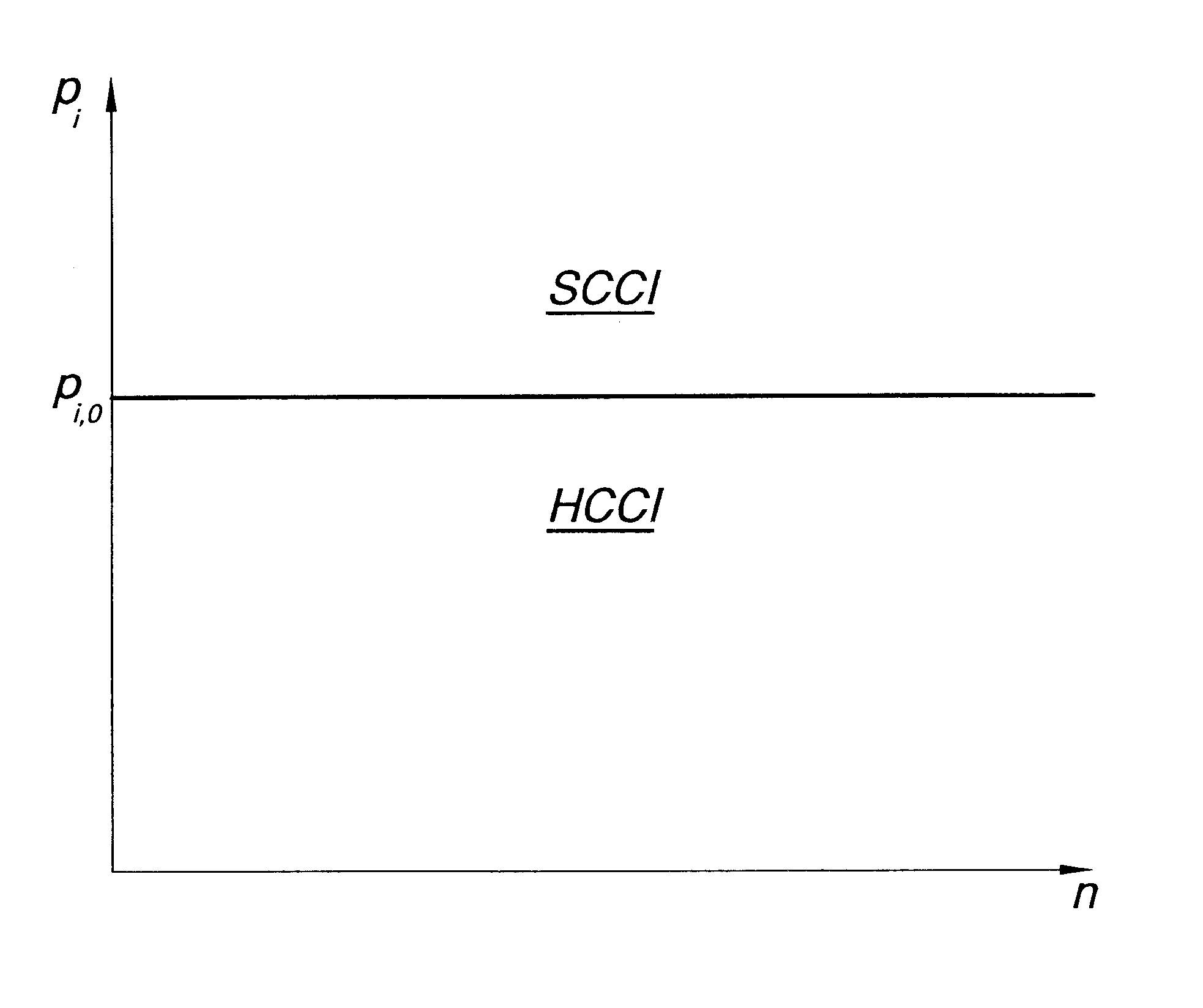Method of operating an internal combustion engine operated on gasoline type fuels
a technology of internal combustion engine and gasoline type, which is applied in the direction of charge feed system, electric control, fuel injection apparatus, etc., can solve the problems of diesel fuel compounding difficulty, .sub.x, soot and unburned hydrocarbon emissions, and risk of diesel fuel mixing with lubrican
- Summary
- Abstract
- Description
- Claims
- Application Information
AI Technical Summary
Benefits of technology
Problems solved by technology
Method used
Image
Examples
Embodiment Construction
Furthermore, to combine the HCCI and SCCI processes also makes sense because the idea to process fuels with poor auto-ignition characteristics throughout the load range according to the conventional diesel process is generally difficult to realize. The reason therefore is the tendency to incomplete combustion at part load, i.e., at low component and charge temperatures.
In renouncing the HCCI process with its excellent emission data with regard to soot and NO.sub.x at part load, the variant of the conventional diesel process mentioned is still of interest in the whole load range when used in utility engines. As also required for the HCCI process, the disadvantages mentioned can be reduced in rising the charge temperature level by recirculating the exhaust gas. This renunciation can be justified in that, with utility engines, the share of low load emissions in the result of the cycle is comparatively low. A significant advantage of this solution, i.e., the pure diesel engine operation...
PUM
 Login to View More
Login to View More Abstract
Description
Claims
Application Information
 Login to View More
Login to View More - R&D
- Intellectual Property
- Life Sciences
- Materials
- Tech Scout
- Unparalleled Data Quality
- Higher Quality Content
- 60% Fewer Hallucinations
Browse by: Latest US Patents, China's latest patents, Technical Efficacy Thesaurus, Application Domain, Technology Topic, Popular Technical Reports.
© 2025 PatSnap. All rights reserved.Legal|Privacy policy|Modern Slavery Act Transparency Statement|Sitemap|About US| Contact US: help@patsnap.com


